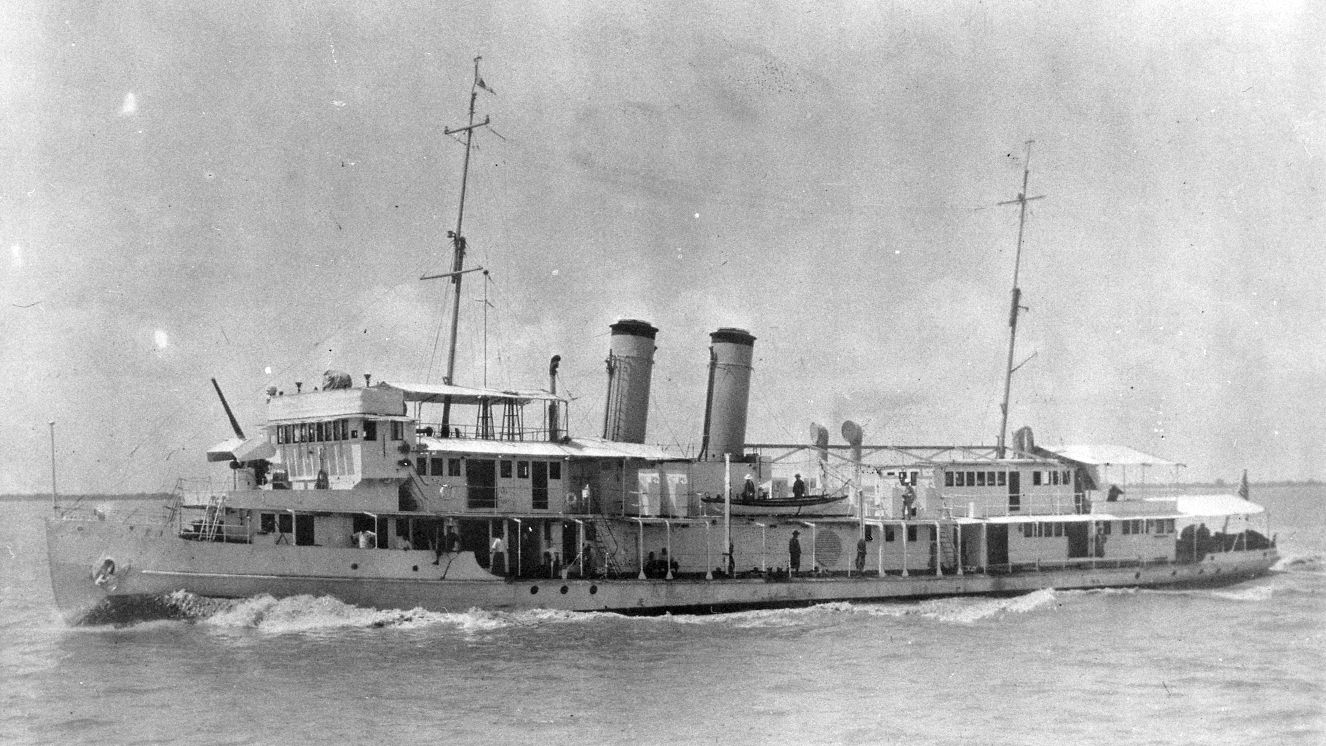THE LEAN, MEAN, LETHAL B-52 BOMBERS - WISE GUY & GHOST RIDER - ARE BACK!

Introduction
In the words of Slim Shady, guess who's back, back again!? Two B-52 bombers - Wise Guy and Ghost Rider - are back from the boneyard, and they’re ready to F*CK. SH*T. UP. Updated with modern technology, the B-52 bombers Wise Guy and Ghost Rider are back and fully complemented with jointly developed weapons that are essential in order to make sure our big stick is much bigger than everyone else’s. Read on to explore nine reasons why we believe that these B-52s are the baddest of bad bombers (say that 10 times fast) backed up by literal explosive history facts about them!
B-52 Bomber History
Designed as an atomic-bomb carrier capable of reaching the Soviet Union, the B-52 bomber proved adaptable to missions in service for more than 60 years as a part of the U.S. strategic bomber force. Under Air Force Global Strike Command, the fleet of 76 B-52H Stratofortress includes test aircraft at Edwards AFB. The 5th Bomb Wing uses other aircraft at Minot AFB, North Dakota, and the 2nd Bomb Wing at Barksdale AFB, Louisiana.
9 Reasons Why B-52s Are the Most Bad*ss of the Bunch
Get familiar with this multi-generational American legend with these facts, or skip ahead as you like with the links below.
- B-52 Bomber Size
- 60-Year-Old Bones Dropping Bombs
- Ghost Rider Rides Again
- Surveilling the Seas
- Wise Guy Is Back and Packing Heat
- B-52 Bomber Cost
- B-52 Bomber Engines
- High-Tech & Modern

1. USAF’s Loyalty to B-52 Bombers
- Fuel Capacity: 312,197 pounds
- Payload: 70,000 pounds
- Ceiling: 50,000 feet
- Crew of Five: aircraft commander, pilot, radar navigator, navigator and electronic warfare officer
The B-52H Stratofortress is a long-range, heavy bomber that can perform a variety of missions. The bomber can fly at high subsonic speeds at altitudes of up to 50,000 feet. In addition, it can carry nuclear or precision-guided conventional ordnance with worldwide precision navigation capability. The B-52 can perform strategic attacks, close-air support, air interdiction, offensive counter-air, and maritime operations in a conventional conflict. The Air Force is pouring billions into modernizing B-52s and maintaining the bomber’s legacy as the most feared in the world.
2. B-52 Bomber Size
- Length: 159 feet, 4 inches
- Height: 40 feet, 8 inches
- Weight: Approximately 185,000 pounds
- Wingspan: 185 feet
The massive airframe of the B-52 earned it the incredibly appropriate nickname “Big Ugly Fat F*cker” (BUFF). However, its robustness is helpful because it allows for tons of new technological updates on the plane. Fun Fact:

3. 60-Year-Old Bones Dropping Bombs
- 70,000 pounds: Mixed ordnance — modified bombs, mines, and missiles.
- 1961-2050: The Air Force expects to keep B-52 bombers in operation for decades to come.
All 76 B-52s in the USAF fleet were built in 1961-1962. Today, numerous updates to the B-52 are in progress to ensure it remains a lethal global strike bomber. This proves two things:
- You CAN teach an old dog new tricks.
- Older = BETTER. (Which is good news for all you pre-9/11 Vets out there.)
Did you know during Operation Chrome Dome (1961-1968), Strategic Air Command kept B-52s airborne and armed with nuclear weapons 24 hours a day? You only WISH you had the stamina…
4. Ghost Rider Rides Again
“I’m the only one who can walk in both worlds. I’m Ghost Rider,” Johnny Blaze said in the Marvel comic. Ghost Rider, the B-52 bomber, lived it in real life, rising from “the boneyard” at Davis-Monthan AFB to rejoin the Air Force fleet. At fifty-five years old, Ghost Rider began the transformation from cobwebs to combat. It is now one of two boneyard makeovers in the B-52 fleet.
- 272 days: overhaul, modernization and restoration work by 565th Aircraft Maintenance Squadron at Tinker AFB.
- 7,000 hours: more than regular programmed depot maintenance to catch up to the rest of the B-52 bomber fleet.
That’s MUCH cooler than the comic Ghost Rider’s fiery motorcycle.
5. Surveilling the Seas
The stats on the B-52 bomber are MUCH more impressive than your dinky little Mustang. Before you gloat to an USAF pilot about the 450-some-odd horsepower you get driving to bingo and back, ask them about the power of their B-52 bombers.
- B-52 Bomber Speed: 650 miles per hour (Mach 0.84)
- B-52 Bomber Range: 8,800 miles (7,652 nautical miles)

6. Wise Guy Is Back and Packing Heat
When a wise guy gets whacked in the movies, another wise guy is ready to fill his shoes. In real life, when a B-52 bomber perished in a fiery crash at Anderson AFB on Guam in May 2016, it left the Air Force fleet one short of the 76 B-52 bombers mandated by Congress. So, Wise Guy, the mighty B-52 bomber, would no longer sit idle in the 309th Aerospace Maintenance and Regeneration Group facility, known as the “boneyard” on Davis-Monthan AFB. Regeneration began December 2018 with prep for the 1,000-mile flight to Barksdale AFB for repairs before flying to Tinker AFB in March 2020 for programmed depot maintenance at the Oklahoma City Air Logistics Complex. Wise Guy is fully operational as of December 2020. Fact Check: The seven crew members aboard the 2016 Guam crash all survived! Investigators determined pilot error did not contribute to the incident that destroyed the aircraft.
7. B-52 Bomber Cost
- 2012 dollars: $84 million
- 2021 dollars: $97 million
The U.S. Air Force fact sheet for the B-52 states the B-52 bomber cost in 2012 fiscal dollars: $84,000,000. The inflation rate in the United States from 2012 to today is 15.47% — an increase of $12,994,447. So, $84,000,000 in 2012 is equivalent to $96,994,447 in 2021. That’s money you’ll never see in your entire lifetime, and it makes these bombers the most deadly and expensive aerial artwork ever.
8. B-52 Bomber Engines
- Power plant: Eight Pratt & Whitney engines TF33-P-3/103 turbofan
- Thrust: Up to 17,000 pounds each engine
Eight Pratt & Whitney turbofan jet engines power the B-52 Bomber with an unrefueled range of 8,800 miles and the ability to carry a 70,000-pound payload. (That’s AT LEAST enough for you and your two civilian buddies

9. High-Tech & Modern
Combat Network Communications Technology
If you can’t even properly work your new iPhone, you’d never have a chance at understanding all the awesome technology that goes into a B-52. But we’ll try to explain some of it, anyway. The CONECT modification adds communication data links, full-color LCDs with real-time intelligence feeds overlaid on moving maps, a state-of-the-art computing network, and the ability to retarget a weapon, or mission parameters, mid-flight. So, what does this mean? In the ‘70s, when the B-52 crew arrived at their destination, intel was nearly 40 hours old. With CONECT, forces are updated with current situational awareness throughout the entire mission, giving them a heads up on the whereabouts and goings-on of all the bad guys out there. See the 2nd Bomb Wing’s video about the CONECT upgrade here.
Leveling Up
- Ability to launch the Air Force’s new AGM-181 Long-Range Standoff nuclear cruise missile and the hypersonic AGM-183 Air-launched Rapid Response Weapon
- Weapons bay upgrades will allow B-52s to carry smart weapons internally
- Radar modernization adds capabilities and reduces maintenance
Conclusion
You may be able to catch an air show with the mighty B-52s near you. You don’t want to miss it if it’s coming to your local base. You may never get to see something so incredibly bad*ss again in your entire life. To see what’s available, check Return of the Military Parachute Teams: Golden Knights & Leap Frogs! and Thunderbirds vs Blue Angels: The Return of the Air Shows for updated show dates and locations. Explore more military content by visiting MyBaseGuide for the latest installation info and AHRN for the best military housing resources.
The appearance of U.S. Department of Defense (DoD) visual information does not imply or constitute DoD endorsement.
BY RACHAEL FISHER
Rachael Fisher is a Contributing Writer at VeteranLife.com.
Rachael Fisher is a Contributing Writer at VeteranLife.com.



